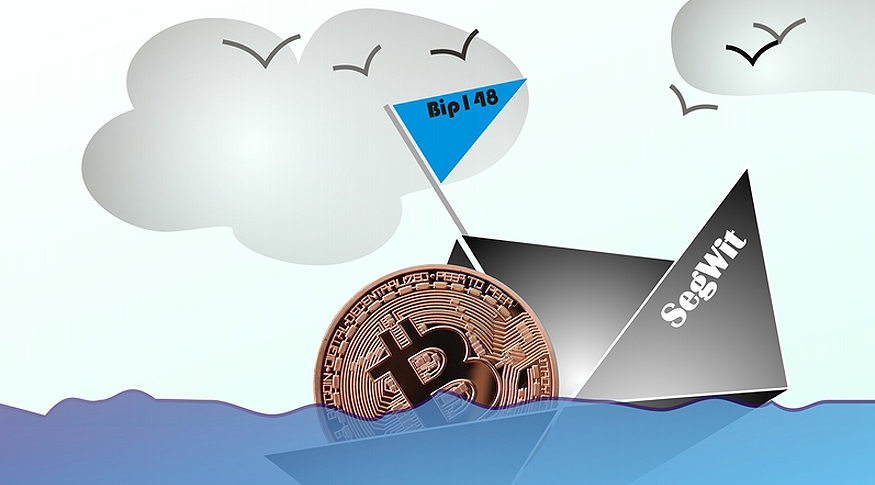The cryptocurrency industry is indisputably leagues from where it began. However, it’s easy to lose perspective among the headlines, which preach bitcoin’s demigod status among financial markets yet also call for its replacement with faster and better technology. These differing viewpoints accurately reflect the democratic way that bitcoin carves out its own future, and few can challenge the fact that the legendary cryptocurrency has achieved some impressive milestones courtesy of community consensus.
Of these, SegWit is likely the most important, as it was the community’s collective choice as to how bitcoin would overcome its obstacles and become the digital cash it always aspired to be.
What is SegWit?
Bitcoin existed for close to 8 years before people began voicing that it wasn’t exactly as advertised. A revolutionary “internet money” with no fees, instant transactions and impenetrable security instead turned out to be just one of three. In late 2017, near the ramp up towards bitcoin’s all-time-high of around $20,000, investors began questioning how a coin that charged users upwards of 10%, and made them wait days for a transaction to process, could be worth so much. This is central to what the community calls the ‘scaling debate’.
Amid the cacophony, during which some rebels hard-forked a new version of bitcoin called Bitcoin Cash, an answer came from the venerable Bitcoin Core team. Composed of developers working mostly for free (though their bitcoins are probably worth quite a bit), a new data storage protocol nicknamed SegWit claimed to solve the debate once and for all, and via soft fork no less. An amalgamation of the words “Segregated Witness”, this new protocol made it possible to remove signature information from transactions and store them outside the blockchain with an eye towards backward compatibility with older bitcoin addresses.
The biggest benefit of SegWit is that it effectively increased the amount of information stored on blocks without increasing their size, which sped up bitcoin significantly (it also spawned the term ‘block weight’). SegWit left room for new second-layer solutions to be created, like the Lightning Network, which aims to be an off-chain software that turbo boosts bitcoin transactions towards the instant, fee-less paradigm that enthusiasts have long dreamt of.
However, it’s up to individual wallets and exchanges to implement SegWit on their own terms. Not many have done so since its inception, but this is quickly changing. Whether to reap the fees generated by non-SegWit addresses or simply due to negligence, those who once refrained from adopting it in their own solutions are now doing so en masse. Why?
SegWit spills into the market
Exchanges, wallets, and other cryptocurrency infrastructure are rushing to add SegWit to their own platforms. Of the many reasons why this is happening now, half a year after the protocol first released, one of the most prominent is that it was a large contributor to the decline that took bitcoin from its late 2017 highs to lows of $5,900—a near 70% decline. News about bitcoin’s sluggishness acts as a perpetual weight on its price, giving skeptics more ammunition.
Predictably, the onset of more SegWit-enabled services also comes down to user demand. Investors and traders of bitcoin are tired of paying fees and waiting for transaction verifications that should be fractions of their current price and speed, respectively. With an increasing variety of platforms to use, market participants have simply moved their bitcoin from one place to another to avoid those services that haven’t yet upgraded. The community has also called for SegWit in relation to bitcoin because of its relationship to the all-important Lightning Network.
With more and more new coins boasting faster transactions that rival even bitcoin’s aspirations, the question as to why bitcoin is worth five figures gains increased legitimacy. SegWit not only helps the Lightning Network to shore up bitcoin’s defenses, but it also improves the entire ecosystem’s interoperability, enabling investors to more easily participate in a broader range of cryptocurrency networks such as SiaCoin, Golem, HoToKeN, and more.
With lower barriers between cryptocurrencies and their different infrastructures, trading one coin for another will be as easy as sending an email. Investors who like SiaCoin’s decentralized cloud memory network, for instance, can trade their other currencies for SIA and anonymously rent cloud storage for their sensitive projects.
Those who prefer a solution like HoToKen, which drives a self-realized value cycle between retailers and customers, can kick-start their brand advocacy and begin vouching for their favorites—earning more coins that are redeemable at retailers themselves. With enough participation in retailers’ missions on the HotNow platform, they can even borrow HoToKeN in bulk.
Golem, another example of a coin made more accessible with SegWit technology, will help participants access a decentralized supercomputer with cryptocurrencies other than GNT, which would otherwise require them to let the network leech their computer’s processing power.
Living in a Segregated Witness World
When SegWit and solutions built on it are universally supported, there will be instant transactions between coins, better arbitrage opportunities, greater fungibility and lower overhead for companies operating in the ecosystem. While it will require people to manually adopt the new protocol, we’ve likely already passed the point of no return.
This is encouraging, because if a situation occurs like the one that transpired in 2017 whereby miners refused to switch from non-Segwit addresses to SegWit alternatives (due to profitable fees), greed will win and true decentralization will lose. Consequently, the bitcoin dream will slowly fade. Thankfully, the community’s voice has only gotten stronger, and louder cries for SegWit across the entire industry are delivering a meaningful impact in terms of reassuring its vast potential.
